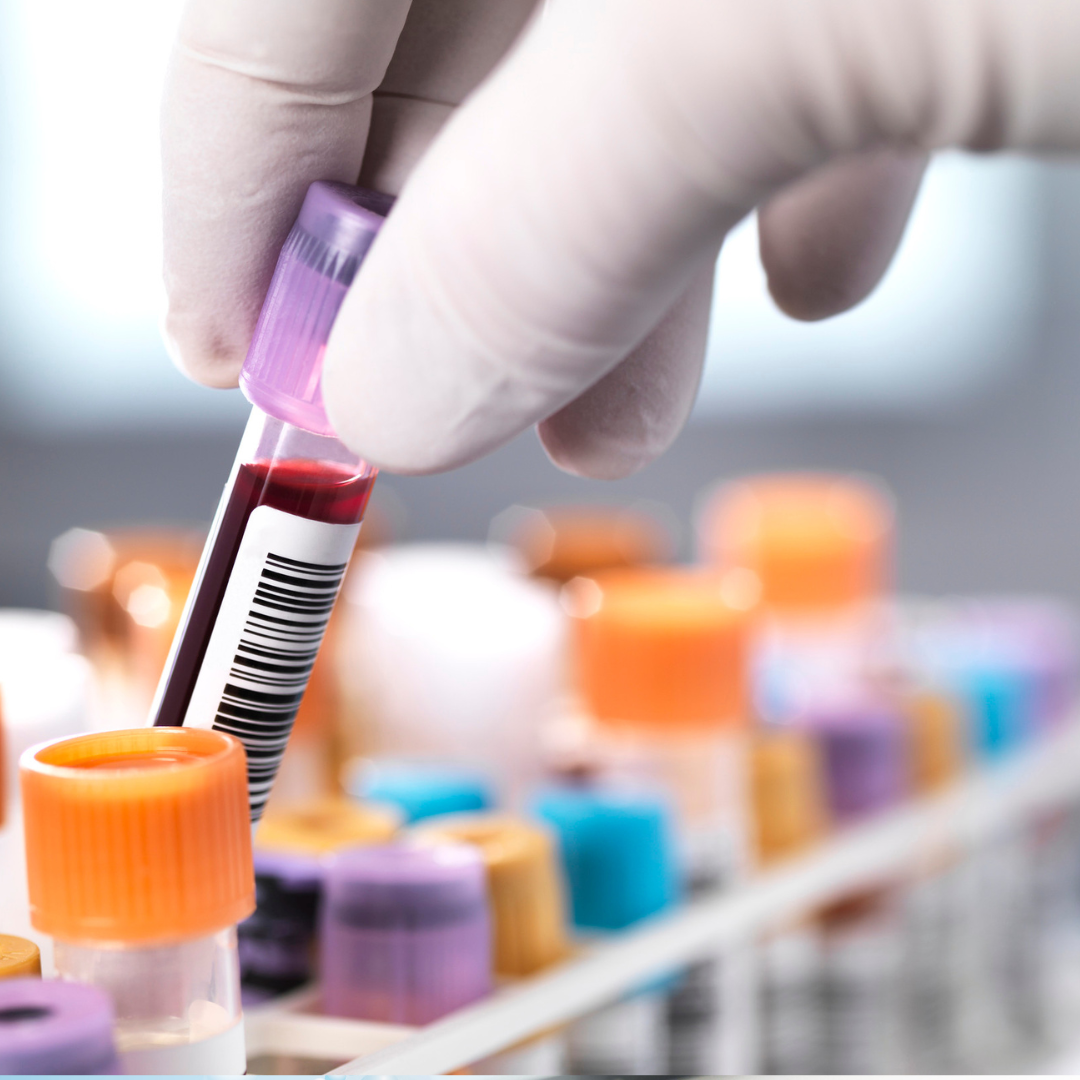Vitamin D
Low levels of vitamin D in the blood, known as vitamin D deficiency, can lead to a variety of health problems, including weakened bones, increased risk of falls, and increased risk of certain types of cancer. Symptoms of vitamin D deficiency may include fatigue, muscle weakness, and bone pain.
Treatment for vitamin D deficiency usually involves increasing vitamin D intake through supplementation or increased exposure to sunlight. However, it is important to work with a healthcare provider to determine the appropriate treatment plan based on individual needs and health status.
Frequently Asked Questions (FAQs)
How is the test performed?
You will receive a complete blood collection kit by post. The kit contains all you need to collect blood from your finger. The components of the kit are:
1. Instruction Sheet: Provides detailed steps on how to collect the blood sample correctly.
2. Box: Contains all the components and is used to hold the tube while collecting blood.
3. Lab Request Form: Needs to be filled out and included with the sample.
4. Labels: For labeling the sample tube.
5. Tube Pouch: A protective pouch for the sample tube.
6. UN3733 Prepaid Mailing Bag: For sending the sample back to the lab.
7. Lancets: Used to prick your finger for blood collection.
8. Wipes: For cleaning your finger before and after collection.
9. Plasters: To cover your finger after blood collection.
10. Blood Collection Tube: for collecting the blood sample.
These components are essential to ensure that the blood sample is collected, stored and sent correctly for accurate testing.
Do I need to set up an account?
No, you don’t need to set up an account, but you do need to activate the sample ID before sending your blood sample to the lab.
Should I fast before collecting my blood sample?
Please check individual test pages for details.
I couldn’t collect enough blood, what should I do?
If you read the instruction sheet carefully and follow the steps as directed, then you should not have a problem in collecting the right amount of blood. However, if you followed all the steps and couldn’t get enough blood, i.e., to the upper line, please contact us and we will arrange to send you a fresh tube and 4 lancets (for an extra fee) and not for free). Please make sure you keep any unused elements (instruction sheet, box, lab request form, labels, tube pouch, and UN3733 prepaid mailing bag) from the kit as you will need them when you receive the new tube and lancets.
I sent my sample, and the blood wasn’t enough, and I didn’t contact London Health Company. What’s going to happen now?
Don’t send any sample if the blood isn’t enough unless you contactedus and we told you to do so. If you sent the sample and the blood wasn’t enough, the lab will reject your sample and it won’t be processed.
After I closed the yellow tube cap, and inverted it 5-10 times gently, I noticed the waxy substance in the tube didn’t dissolve or move, is this OK?
Yes, this is fine. When inverting the tube, the blood will mix with the waxy substance, but you won’t be able to see any difference. The waxy substance will not move or dissolve.
The yellow-top tube has waxy substance, but the purple top tube looks empty. Is it a faulty tube?
The purple top tube is perfectly fine and should look empty.
Where do I find my sample ID?
Your sample ID is unique and should be on the small lab request slip and is highlighted. Your sample ID should always start with three letters and has no spaces.
What happens if I forgot to activate my sample ID before sending the sample to the lab?
This will cause significant delays in reporting the sample if it arrives at the lab and is not yet activated.
What if I forgot to include the lab request slip/form with my sample?
That shouldn’t be a big problem. You can still receive your report on time, but you need to make sure that the sample ID is activated before the sample arrives at the lab. If the lab request slip/form isn’t included and the sample ID isn’t activated, the lab will discard the sample and no refund will be issued.
I bought my test kit online, does that mean that you have my details, and I don’t need to activate my sample ID?
You still need to activate your sample ID. By activating your sample ID, your blood sample is linked to you. Without activating your sample ID, your blood sample won’t be traced back to you.
Do I need to drop off my blood sample at the post office?
Yes, please do so. Make sure that it’s dropped off before the last collection time; otherwise, it will stay in the post office overnight and the lab won’t get it the next day.
Why do I need to avoid posting my blood sample on Friday and weekends?
We aim to receive your blood sample within 24 hours of blood collection. If the sample is posted on a Friday, it means that it will stay in the post for 3 days.
How long does it take for the lab to receive my sample?
Generally, samples arrive within 24 hours of posting to the lab. We use Royal Mail Tracked 24 service, but sometimes, there might be a slight delay in delivery. If the sample’s integrity was compromised by delays, we send a free replacement kit if you have the tracking number to prove the time of posting. This is if sent on Mon, Tue or Wed.
How will I know if my sample was received by the lab?
You will receive an email notification confirming that your sample was checked into the lab.
How will I receive my results?
Once your report is checked and ready, it will be sent to your registered email.
Why have I not received all my results?
This is usually due to one of two reasons:
1. Late or non-activation of the sample ID.
2. Entering the wrong sample ID.
Why does my report say that my sample was rejected by the lab?
Sample rejection mainly occurs due to haemolysis, which is when the red blood cells in the blood collection tube start to break down. This impacts the lab ability to generate results for some tests.
Haemolysis can happen at any stage of the process but most commonly occurs during blood collection. It often results from squeezing your finger instead of massaging the side of your hand. This only happens in a small number of cases, and we will provide a second kit free of charge.
Another reason for sample rejection is when a person has been unable to collect the necessary amount of blood required to perform the testing and sends it to the lab without contacting us beforehand.
Can I change my address after I checked out?
Please note that we cannot change your address if it was entered incorrectly, as orders are dispatched automatically. Once labels are printed, it is difficult for our staff to locate and retract them.
Is the return Free?
Returns must be sent at the buyer's expense and must be returned via tracked mail. We do not accept returns for opened kits as this is a medical device.
Featured Categories
-

General Health Blood Tests
Explore our comprehensive collection of reliable and easy-to-use blood testing kits, designed...



